
If you’ve ever flown over Florida, you can’t help but notice we have a few lakes. If you’ve ever driven in Florida, you may have noticed that a great many of our major boulevards and avenues must twist and turn to avoid these bodies of water. In fact, Florida has over 30,000 lakes of which 7,700 are greater than ten acres. And that’s not even counting all of the retention ponds communities are required to build to help send rain water back down into the aquifer.
All of this H2O got me to thinking how water has influenced Walt Disney World in ways both great and small. So my article today is going to give you an overview of how water shaped the land, then I’m going to look at the fun and entertaining ways water influences our experiences in the parks.
Disneyland was built in one year. But on the other side of the continent, it took five years to get the Magic Kingdom open. Much of this time was spent preparing the property before construction could even begin on the park and hotels. And one of the first tasks of this preparation was dealing with water.
When the Imagineers arrived in Florida, they discovered a number of swamps on the property. And some of these swamps were exactly where they wanted to build. They also discovered that Florida receives torrential downpours that can easily flood low-lying areas, yet at other times, rain can be scarce. Something needed to be done, but what? The Imagineers knew they wanted to manage this water, but they also knew it had to be done in a way that would not destroy the ecosystem. To that end, they constructed 47 miles of canals, 22 miles of levees, and 24 water-control structures and floodgates.
The first plans called for the canals to run in almost straight lines, but Roy Disney would have nothing to do with this idea. He wanted the Walt Disney World property to look natural and insisted the plans be redrawn. Because of his foresight, the canals today curve in a realistic manner and blend in with the surroundings.
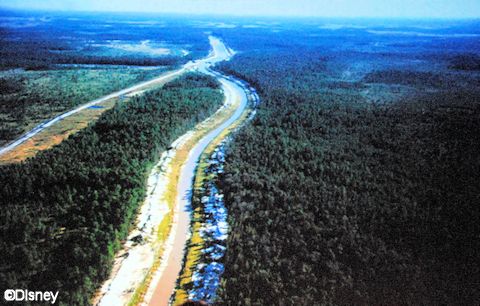

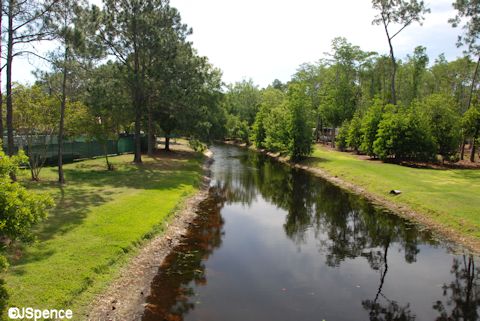
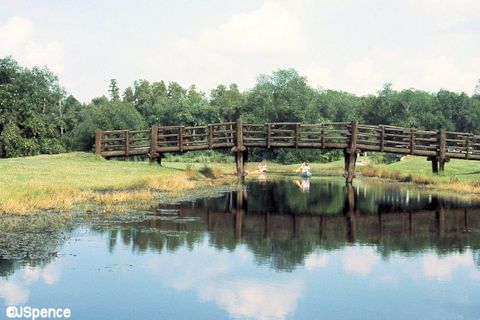

One of the interesting features found along these canals are the floodgates. These keep water levels under control by automatically floating open when the water reaches certain levels and closing when the water subsides. They require no electricity or human monitoring and greatly reduce the risk of flooding or water shortages.
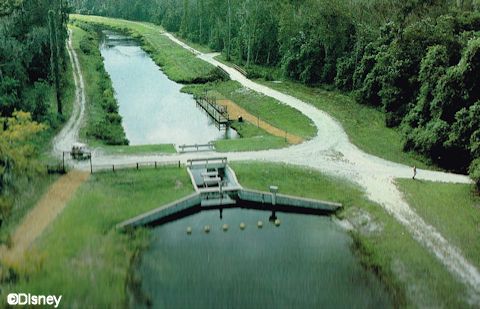
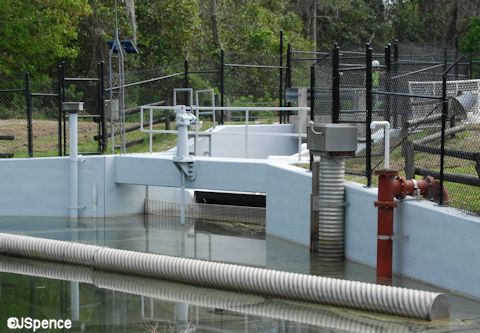
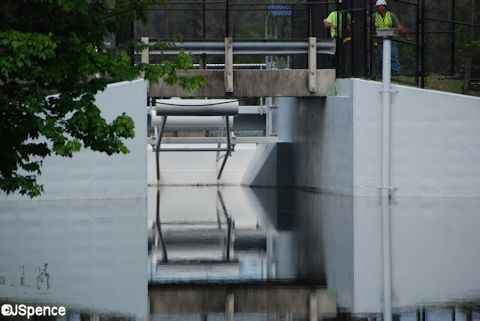
Speaking of drought”¦ In the early 2000’s, Florida received far less rain than normal. Because of this, water levels in Bay Lake and Seven Seas Lagoon dropped significantly. Since many of the docks were built at a fixed height to accommodate the normal, higher water levels, it made loading and unloading of the boats and ferries difficult. To remedy the situation, Disney retrofitted all of the docks with floating platforms so boat and dock levels would always be constant. If you look closely at this next picture, you can see a floating platform next to the stationary dock.
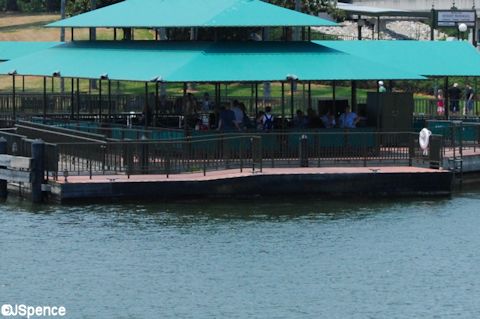
No story of the water at Walt Disney World would be complete without mentioning the creation of Seven Seas Lagoon.
If you look at the early property map that Walt used to announce his latest endeavor, you can see the Magic Kingdom at the top left corner of the diagram. Notice that Bay Lake can be seen to the right of the Magic Kingdom, but no Seven Seas Lagoon to the south as this body of water wasn’t in the initial plans. Instead, we see several hotels clustered closely around the park.

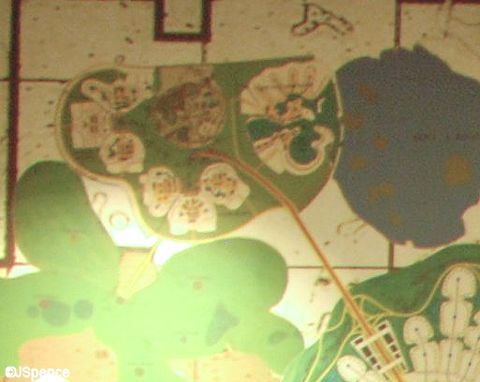
Of course, as we know, the land directly south of the Magic Kingdom turned out to be swampland and was unsuitable for building. So the Imagineers drained this mucky quagmire, cleared out tons of rotting debris, and created another Florida lake.
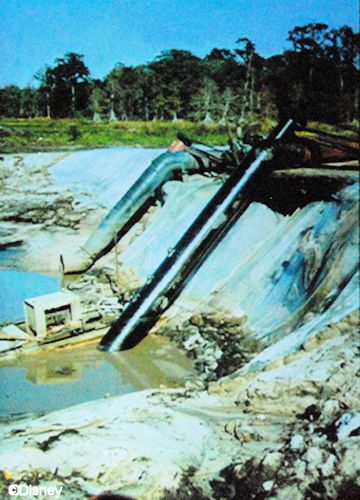
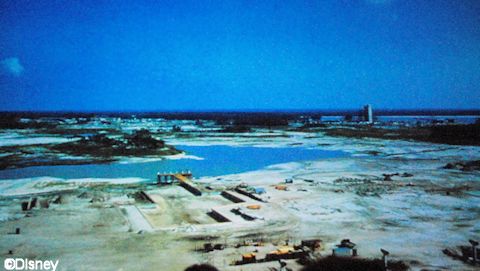
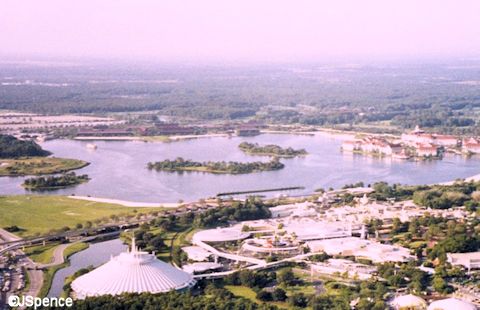
The creation of Seven Seas Lagoon brought about two positive happenstances. First, much of the mud that was excavated was used to bury the utilidors which lie beneath the Magic Kingdom. This earth became the “ground level” of the park.
In case you’ve ever wondered where the utilidors are located, here is a map. Notice that they do not connect every corner of the park, but only go to key locations.
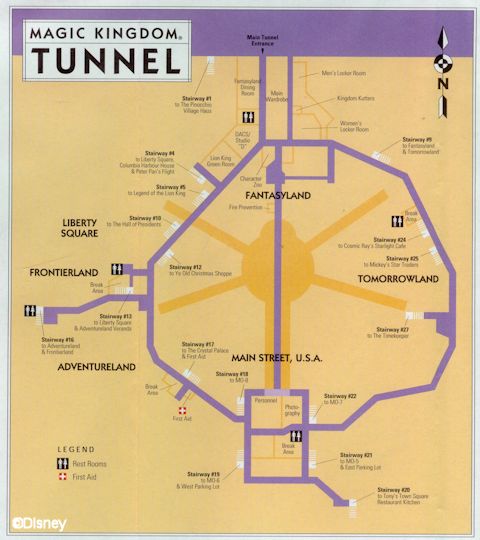
The other positive surprise came with the discovery of white sand buried beneath the muck. This sand would eventually be used to line the shores of the Polynesian and Contemporary Resorts.
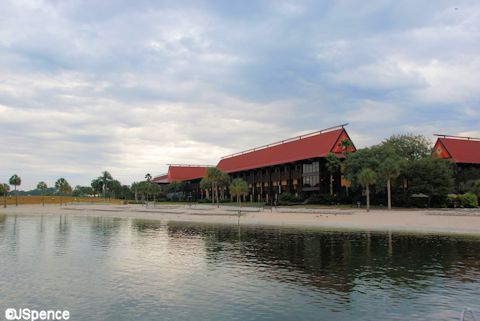

Bay Lake and Seven Seas Lagoon give Walt Disney World something that Disneyland will never have, water recreation. From the marinas of the resorts that line these bodies of water, a number of floating activities can be arranged. Fishing, mini-speed boats, and pontoon boats are all available when someone needs a break from the parks.
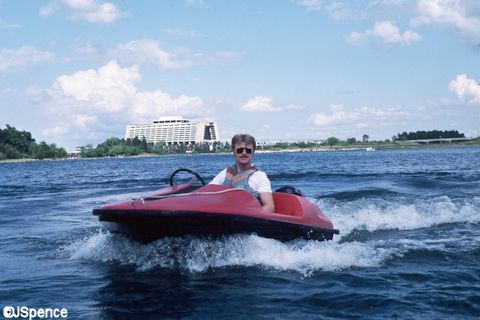
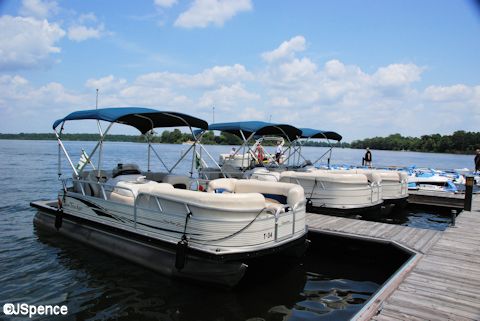
At the Contemporary, Sammy Duvall offers guests an opportunity to waterski and parasail.
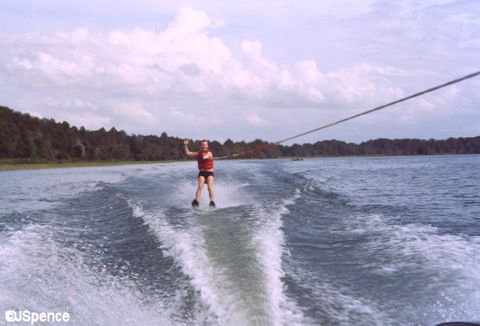
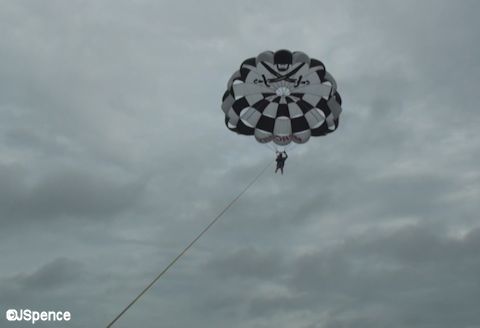

There are other large bodies of water at Walt Disney World worth mentioning such as Crescent and Village Lakes and Sassagoula River, but I think I’m going to table these for the time being.
Now let’s take a look at the water found in the Magic Kingdom. Main Street would be a good place to start, except there really aren’t any water features in this land – not unless you count drinking fountains and restrooms. So let’s move onto the Hub.
The Magic Kingdom Hub is unique among the five Magic Kingdom-type parks around the world. It is the only one that is completely surrounded by a river. Although these other park’s may have small ponds and lakes, their Hub’s are not islands. In my opinion, this fact makes the Florida Hub the most beautiful. The water has a calming effect. This is especially welcome on busy days.
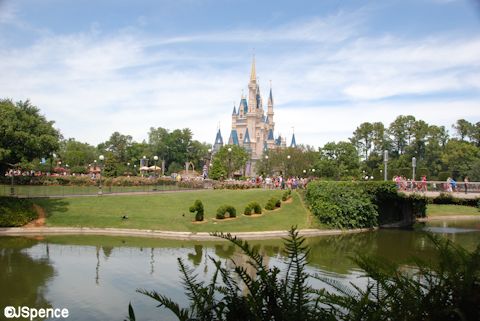

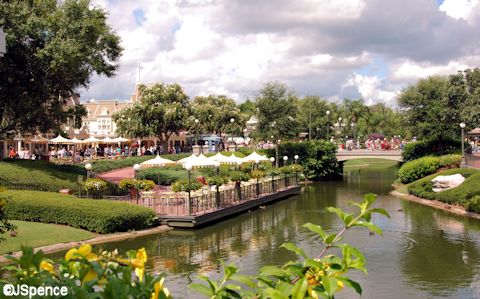
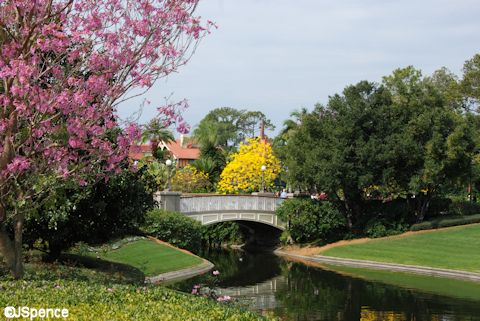
While scouring through my pictures of the Hub, I came across this next photo. It seems that at one time simple fountains added atmosphere near the Rose Garden Pavilion.
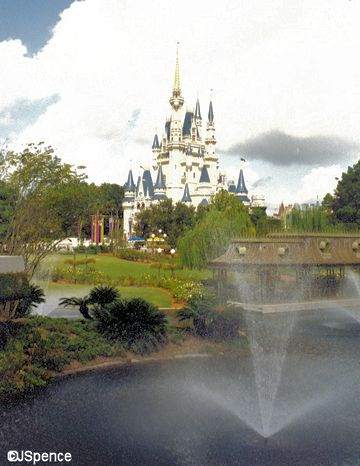
As I’m sure you know, the waterway that circles the Hub was created for the Swan Boats that ran from May 1972 until August 1983. Did you also know that besides circling the Hub, the Swan Boats also circled Swiss Family Treehouse?
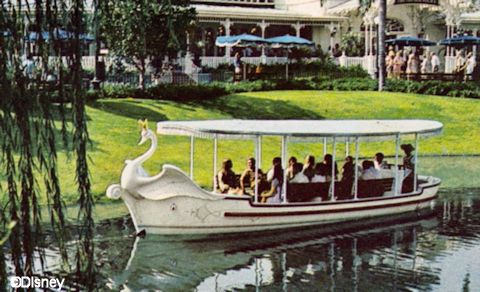
The Imagineers were able to create the Swan Boat waterway for two reasons. First, they had the land to do so whereas Disneyland did not. But more than that, there is an abundance of water available that the non-Florida parks lack. Did you know that the Swan Boat waterway, the Jungle Cruise rivers, and the Rivers of America are all connected and are fed by Seven Seas Lagoon?
One of the most unassuming water features in the Magic Kingdom is found in front of First Aid. This simple fountain sports a pineapple on top, a sign of hospitality and welcome.
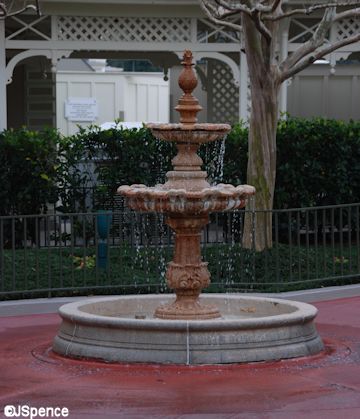
Because the Hub is an island, bridges are needed to transport guests to the various lands. These bridges help tell the story and prepare our minds for what is to come. Tomorrowland features a modern, concrete bridge. The Adventureland bridge has an elaborate, tropical feel whereas the Liberty Square bridge is a far more simple wooden structure. Then of course the castle bridge is made of stone and has an imposing look.

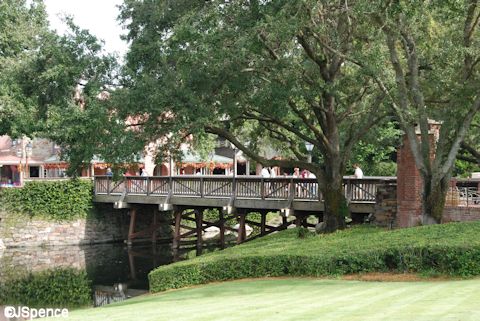
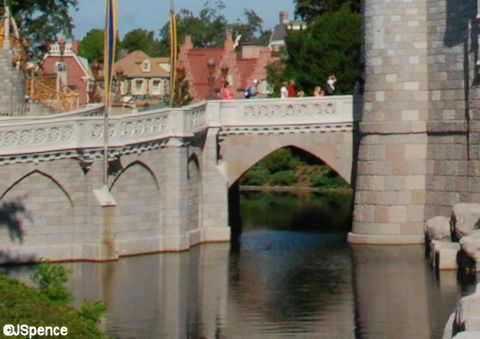
Currently, the Hub is going through a major refurbishment to create more viewing opportunities for nighttime castle shows and fireworks. Because of this, the Swan Boat canal is drained of water. I think you’ll agree after looking at these next two pictures, water adds a lot to the landscape.


At the northeast corner of the Hub is a lovely waterfall. It’s fun to stand on the nearby bridge and watch the ducks take a refreshing drink.
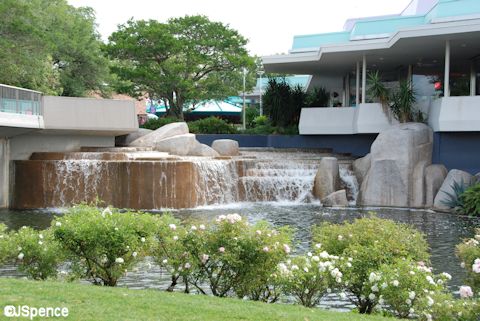

Let’s move next to Tomorrowland. When the Magic Kingdom first opened, the entrance to this land-of-the-future looked much different. Two tall towers flanked the entrance and water cascaded down from the top of the spires. When the wind was light, this was an impressive sight. Unfortunately, even the smallest breeze caused the water to spray those walking by. On cold days, park managers turned this feature off to help protect guests from getting wet. Tomorrowland was updated in 1994 and the entrance took on a new look – minus a water feature.

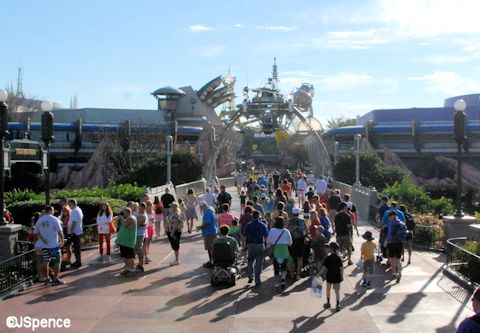
The Magic Kingdom’s Tomorrowland was designed in the late 1960’s. At that time, the Imagineers thought the future would be concrete, concrete, and more concrete. Because of this, no lakes or fountains were included in this land. The only water feature within the original Tomorrowland was the waterfall at the base of the Skyway Terminal.
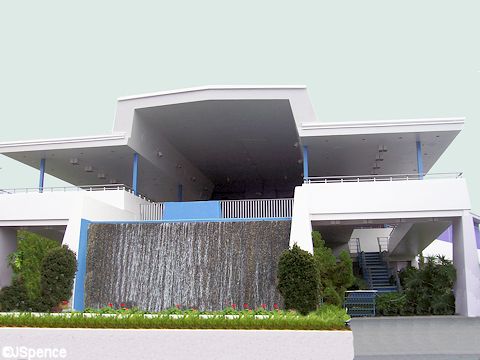
Because of this initial design, the reimagined Tomorrowland of the 1990’s still lacks water as a design element. Today, the only attractions that are remotely related to water are the large stone sphere that floats on a thin layer of water and the mist that sprays from the Thirst Rangers Rocket Ship.
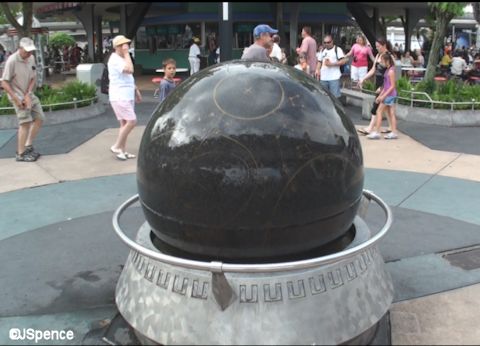
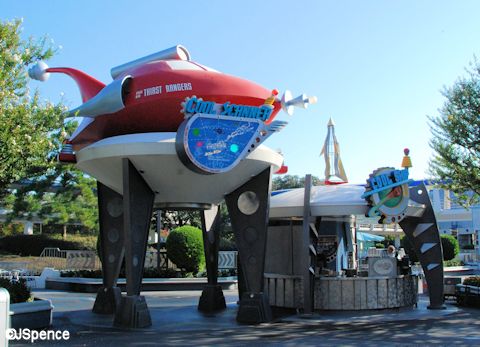
Interestingly, the Tomorrowlands of Disneyland Paris and Hong Kong Disneyland did include water in their designs with the inclusion of the Nautilus and a children’s splash area. And of course, Disneyland had the Submarine Voyage.

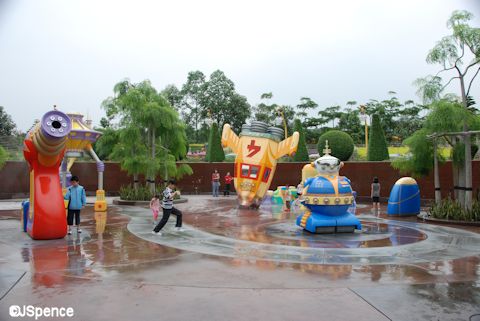
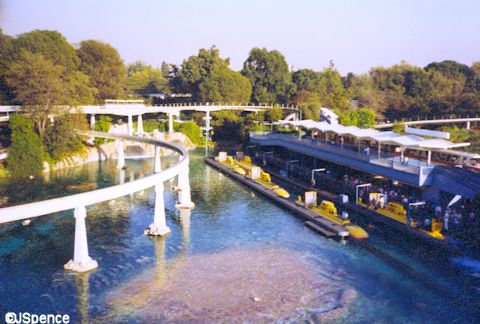
Let’s move counterclockwise and take the pathway that leads from Tomorrowland to Storybook Circus.
Storybook Circus has perhaps the best water feature in the Magic Kingdom. Casey Jr. Splash ‘N” Soak Station is a fantastic play area for kids. On hot days, the water jets offer a great cool-down area.
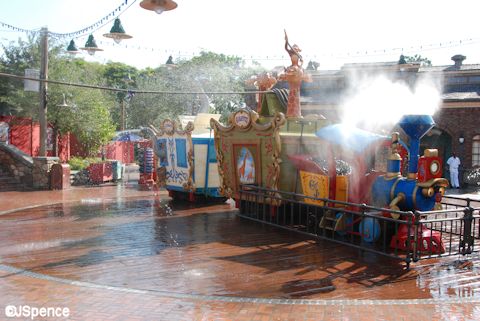
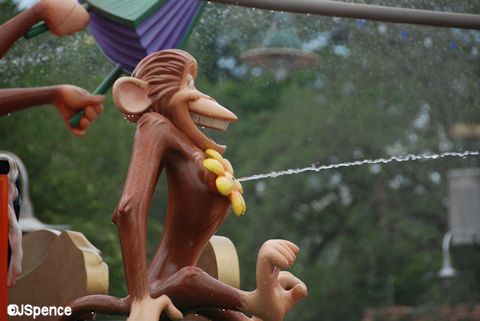
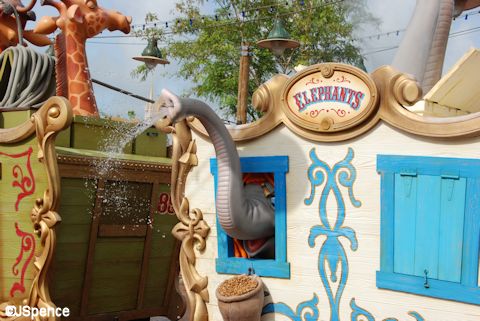
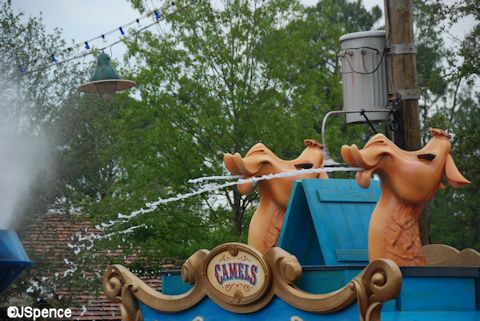
The Dumbo attraction at Disneyland has had a water feature ever since their Fantasyland was remodeled in 1984. However, the Dumbo attraction at the Magic Kingdom did not. This is because the Magic Kingdom’s version was located on top of the Utilidors and the weight of the water would be too much for the underground structure. However, when Dumbo was moved to Storybook Circus, water was added to enhance the ride. Although guests do not get wet on this attraction, the water adds a nice bit of ambiance.
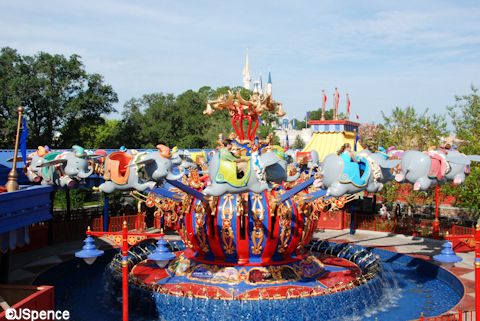
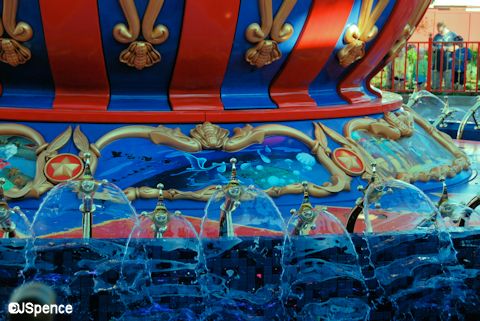
As we move into Fantasyland proper, we come to the Under the Sea – Journey of The Little Mermaid. The exterior of this attraction is modeled after Prince Eric’s castle which is located on the seashore. The outside portion of this queue features a lagoon that suggests it’s an offshoot from a nearby ocean or sea. As we venture further along the path, we come to several waterfalls cascading from nearby cliffs.


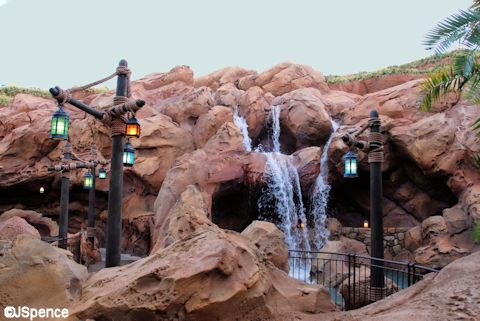
Inside the attraction we see make-believe water featured in the Kiss the Girl vignette.
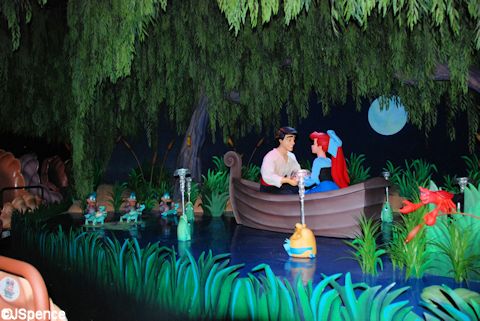
Next door to the Little Mermaid attraction is Gaston’s Tavern. Out front of this non-alcoholic pub is a statue a Gaston holding two kegs of ale, spilling into mugs held by LeFou. I find the irony here interesting.
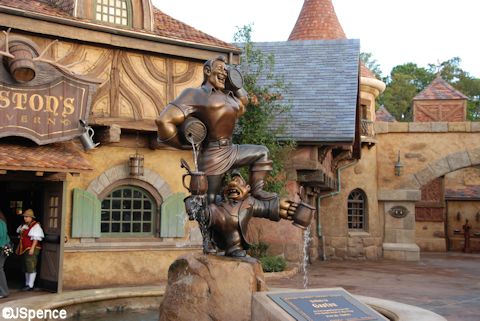
Near Beast Castle, a rushing river flows from the mountains and under a bridge where it collects in a quiet pool. It appears that this pool will someday also connect with waterfalls flowing from the nearby Dwarf’s mine.
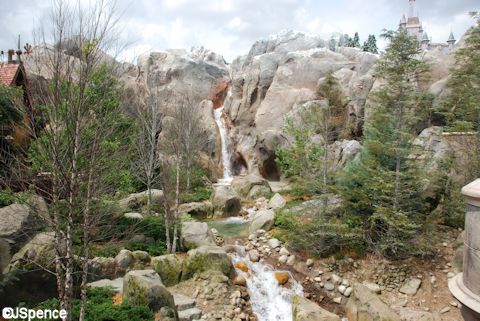
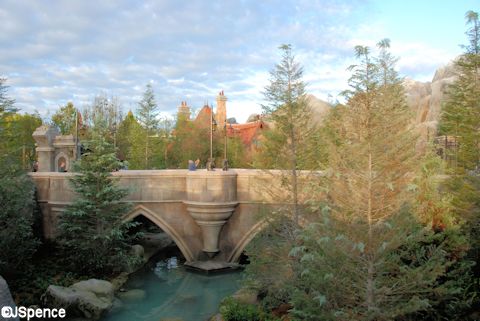
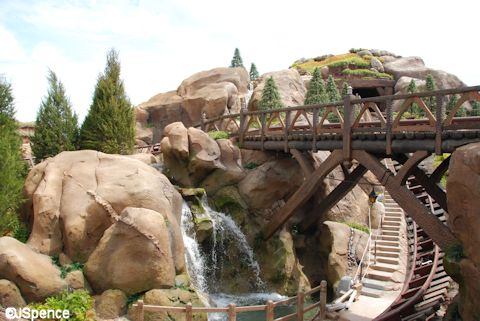
Before Ariel, Beauty, Beast, and Gaston came to this area of Fantasyland, there was the 20,000 Leagues under the Sea attraction. This was a huge water feature. So big in fact that it engulfed 25% of the real estate in Fantasyland and held 11.5 million gallons of water. But unlike the water found in the Swan Boat waterway and the Jungle Cruise, this was a self-contained system which filtered 3,000 gallons of water per hour, making it clearer than tap water.

At Disneyland, the submarines traveled beneath a full waterfall. But at the Magic Kingdom, the Imagineers could never get the boat’s hatches to seal completely and they leaked. Eventually it was decided to part the waterfall so the subs were not directly hit with water as they sailed into the indoor portion of the attraction.
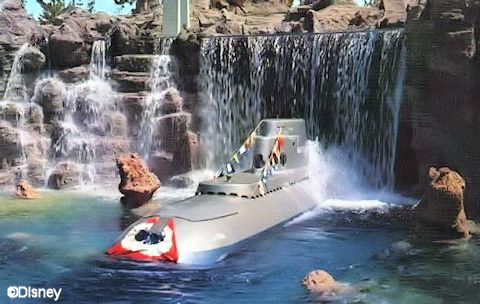
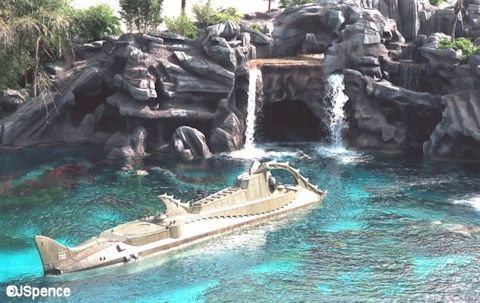
In the original queue of “it’s a small world,” fountains were used in in the loading/unloading area. But after the remodel, these were eliminated.

The old Fantasyland Skyway Terminal had a small waterfall and pond to add interest to this Alpine structure.

The Skyway Terminal was recently replaced with a new restroom and relaxation area themed around the Kingdom of Corona, home of Rapunzel. Near her tower is a small waterfall that spills into a stream that flows through the area.
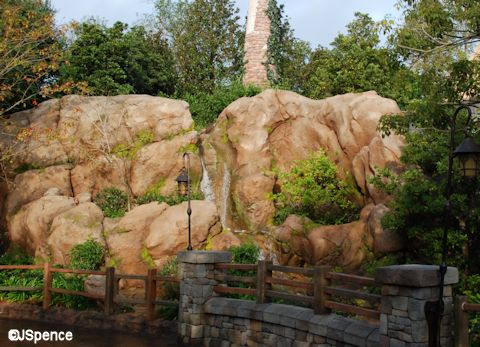
One of the most sought after picture spots in Fantasyland also involves water. The Cinderella fountain that sits across from the castle is a favorite of many little princesses.
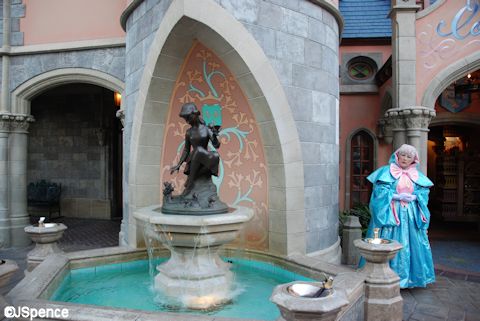
In Mickey’s Philharmagic, guests are treated to a surprise splash of water in the Sorcerer’s Apprentice sequence.
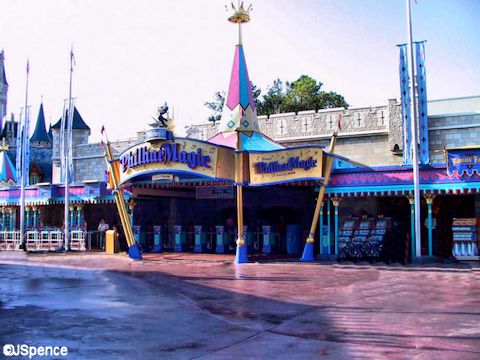
Liberty Square does not have any water features as I believe the Rivers of America is part of Frontierland – even though the Liberty Belle Riverboat (thematically incorrectly) loads and unloads from this land. On the other hand, Frontierland has a number of water features – like the Rivers of America.
The Rivers of America is the largest water feature in the Magic Kingdom. Although it has no fountains or waterfalls, it is still impressive and adds a tremendous amount of atmosphere to the area. The Liberty Belle is a beautiful sight as it sails by.
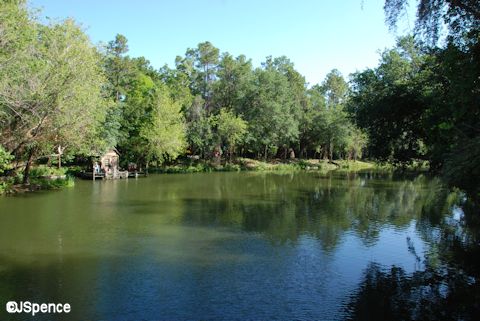
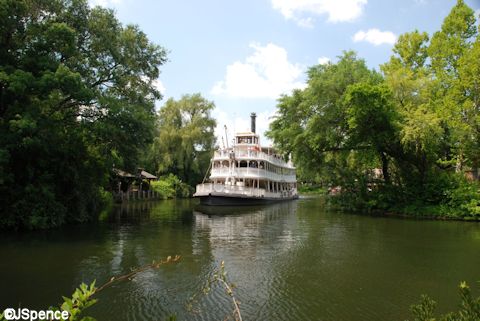
And if you happen to time your voyage on the Lilly Belle Riverboat correctly, you just might get to see one of the steam locomotives reflecting in the water as it crosses the turntable bridge that traverses a small inlet.
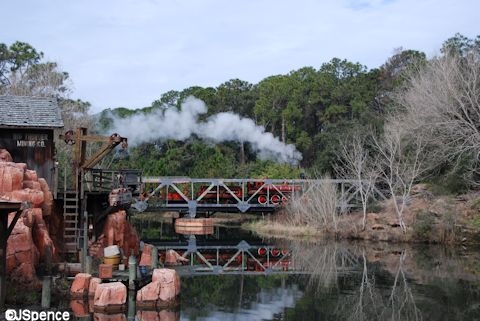
Thunder Mountain has a number of water features. The first is in the queue where we see a wooden trough funneling water away from the mountain. A second such device can be seen while riding the runaway train.
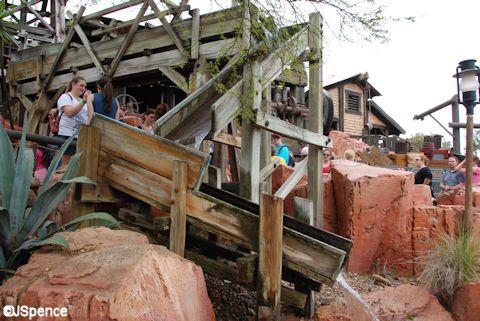

Once on the mine train, guests encounter water on several occasions. The first is when the locomotive makes its initial uphill climb. To the right is a phosphorescent pool. As droplets fall from stalactites, the ripple effect creates a rainbow of colors in the pool below. In its day, this was a state-of-the-art effect.

Then of course, there is the raging water fall at the top of the hill that cascades to both sides of the train.

Further on, we come to the washed out town of Tumbleweed. Perhaps the two most interesting water related figures here are Cumulus Isobar who is frantically bailing water and Cousin Elrod who is taking advantage of the flood and relaxing in a bathtub.


Near the end of the ride, the train skirts a mudpot. This acidic hot spring bubbles and gurgles as you whisk by.

At the exit of Big Thunder are several geysers that erupt without notice. On a hot day, the mist generated from these geysers can feel pretty nice.

Splash Mountain is one GIANT water feature. Just watching the hollowed out logs plummet down Chickapin Hill is fun.
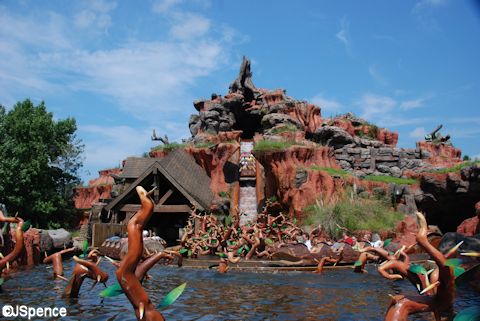
Deep inside Splash Mountain guests find an amusing water feature. Just before the ascent, leap fountains crisscross our path and frogs and turtles frolic in the mist.

If you hadn’t already gotten soaked, the Imagineers wanted to give you one more chance to get wet. Toward the end of the ride, the logs pass by yet another waterfall. Although you don’t get drenched, passengers sitting on the right side of the log do get splashed. Thankfully, the water flowing down this fall is cut back when the temperatures drop.

Over in Adventureland, I really wouldn’t say that Pirates of the Caribbean has a water feature as you can’t actually see the waterfall that you plunge down as you head for the battle between the Wicked Wench and the fortress.
Probably the most famous Adventureland water feature are the tiki poles designed by Disney Legend Marc Davis. When originally installed, these humorous fellows were simply a show piece with no water feature. But a remodel gave these island gods the ability to spit on guests and blow steam from their nostrils.
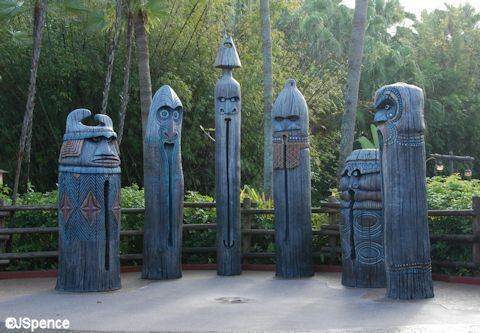
Speaking of spitting”¦ The two camels keeping watch at The Magic Carpets of Aladdin like to hit unsuspecting guests with their make-believe saliva.
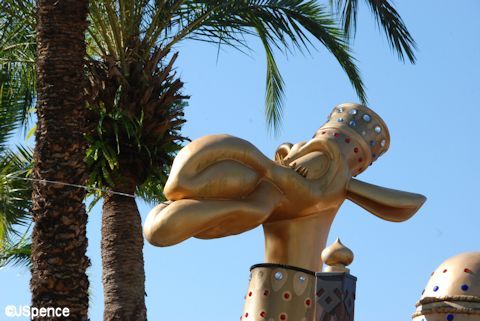
The queue of the Tiki Room includes a parting waterfall that reveals Clyde & Claude, cousin toucans who host the pre-show.

Before the Tiki Room was remodeled to include Zazu and Iago in “Under New Management,” it included the Enchanted Fountain. From a bed of tropical flowers, a column of water raised to a height of over five feet, astounding guests with its magical properties.
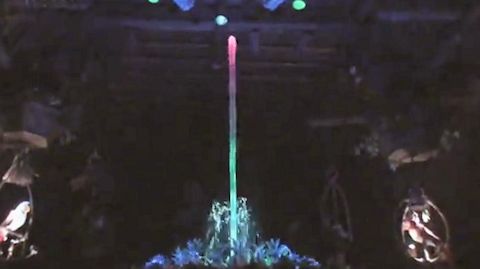
“And now, we’re approaching beautiful Schweitzer Falls, named after the famous African explorer, Dr. Albert Falls.”
“You know, I’ve heard that more water comes over Schweitzer Falls in one minute than a man can drink in his entire lifetime. I don’t know about you, but I find that a little hard to swallow.”
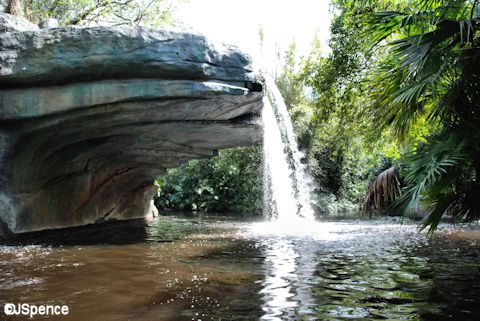
Of course, the above quotes are just two of the hundreds that can be heard on the Jungle Cruise.
And down the river a bit, we come to the Elephant Wading Pool. But don’t worry, they all have their trunks on.
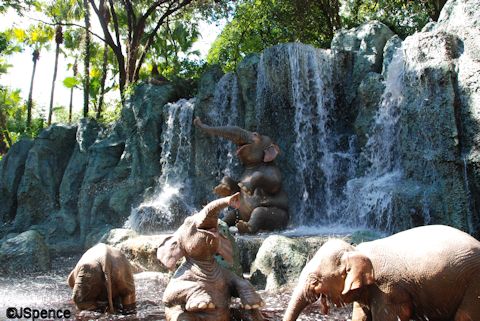
Earlier I mentioned that Main Street had no water feature. I was incorrect. While looking through my pictures I found this massive example of water on Main Street.

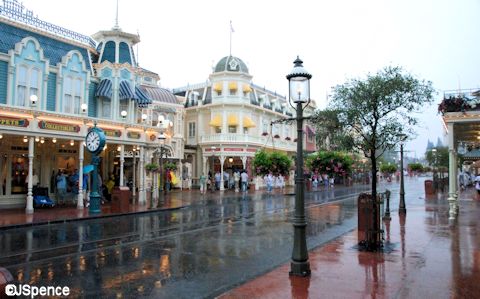
That’s it for Part One. Check back Thursday when I’ll discuss the water found at Epcot.


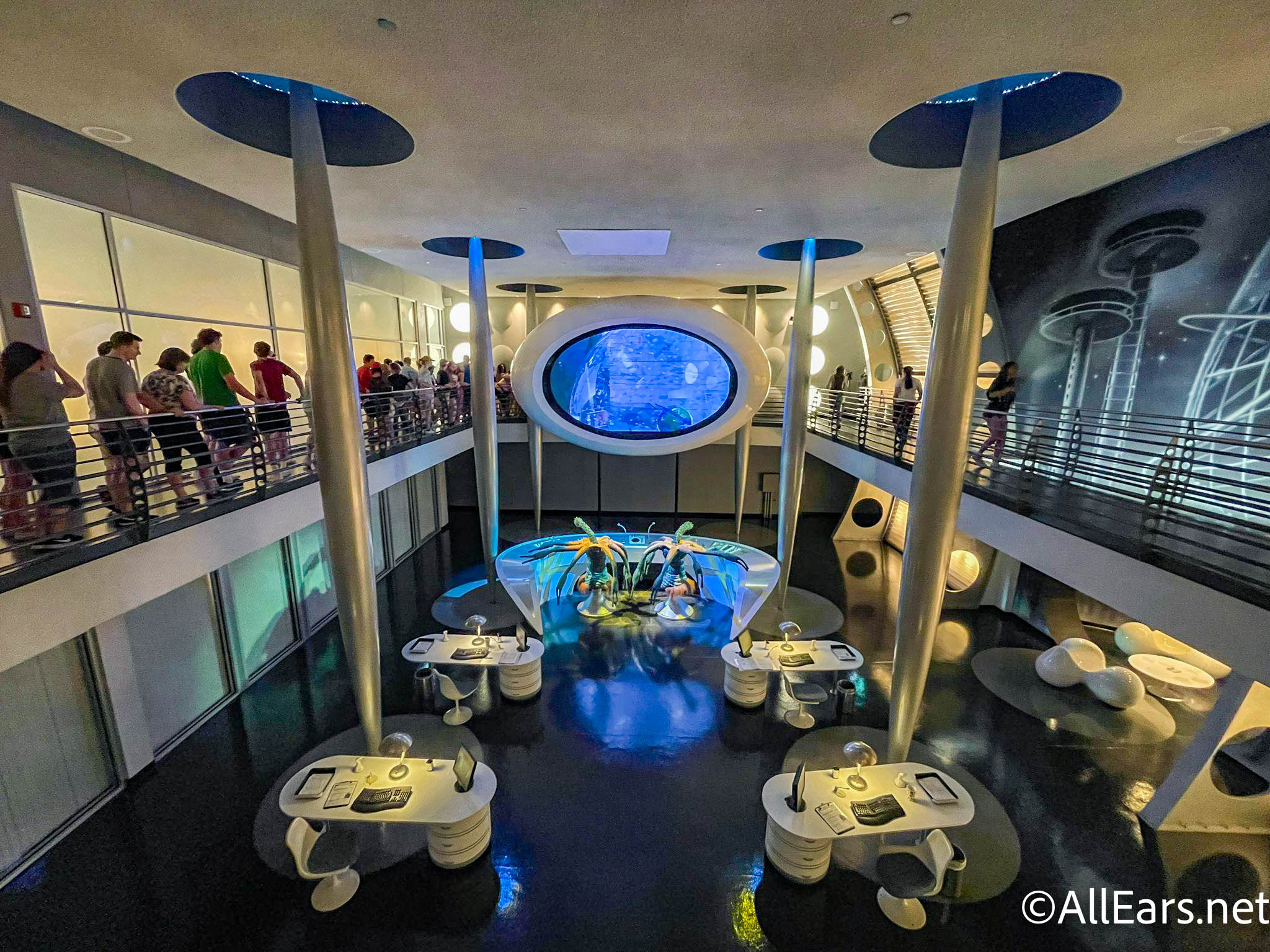

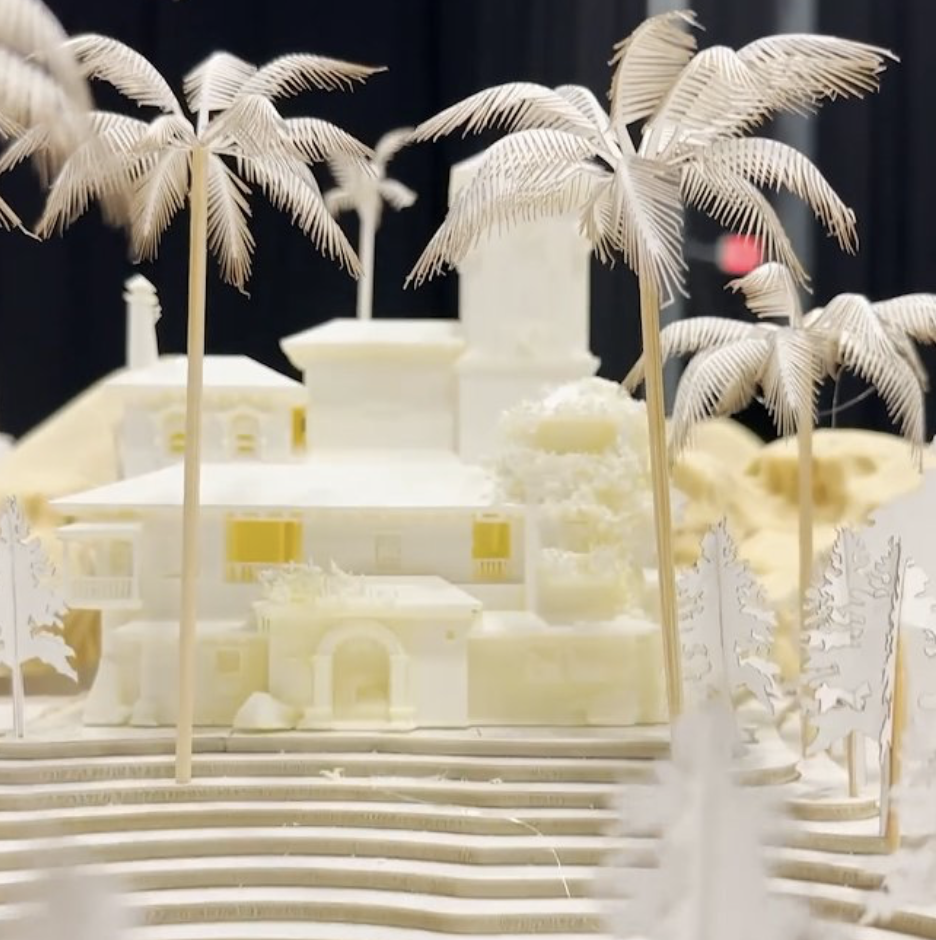

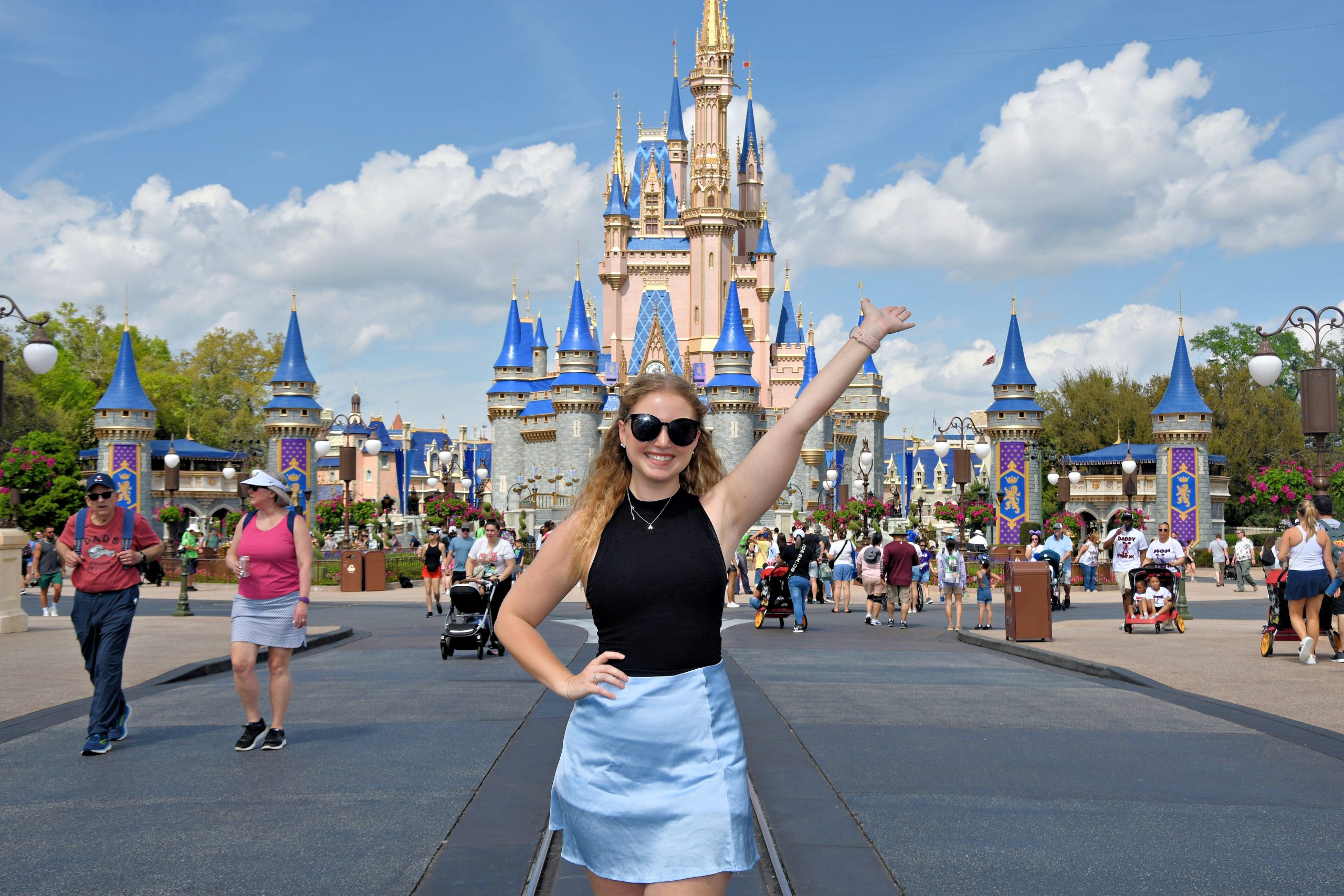

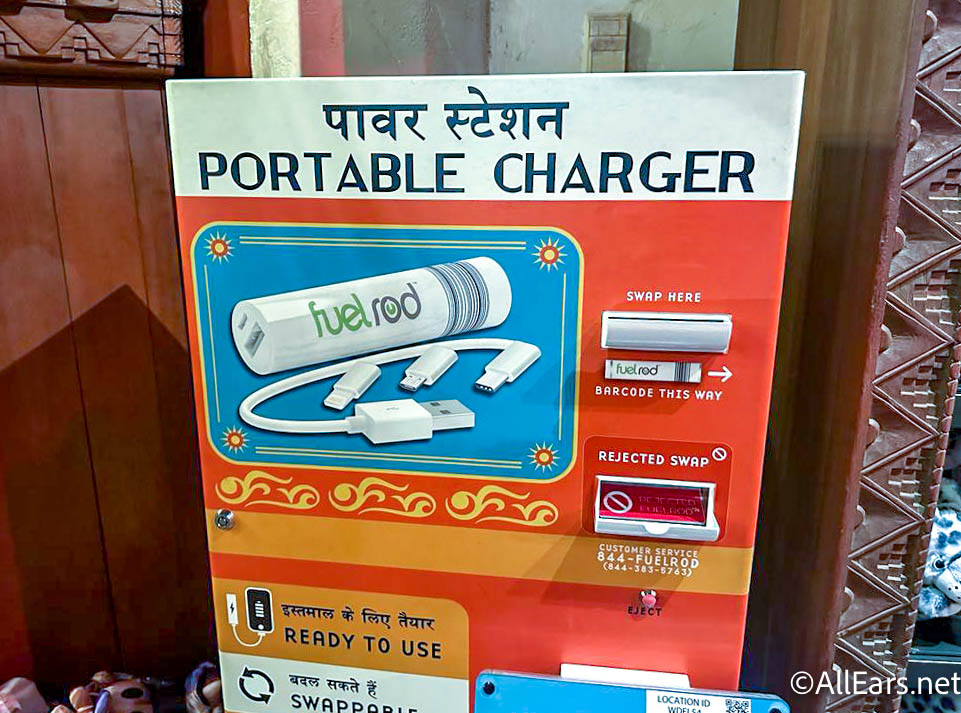

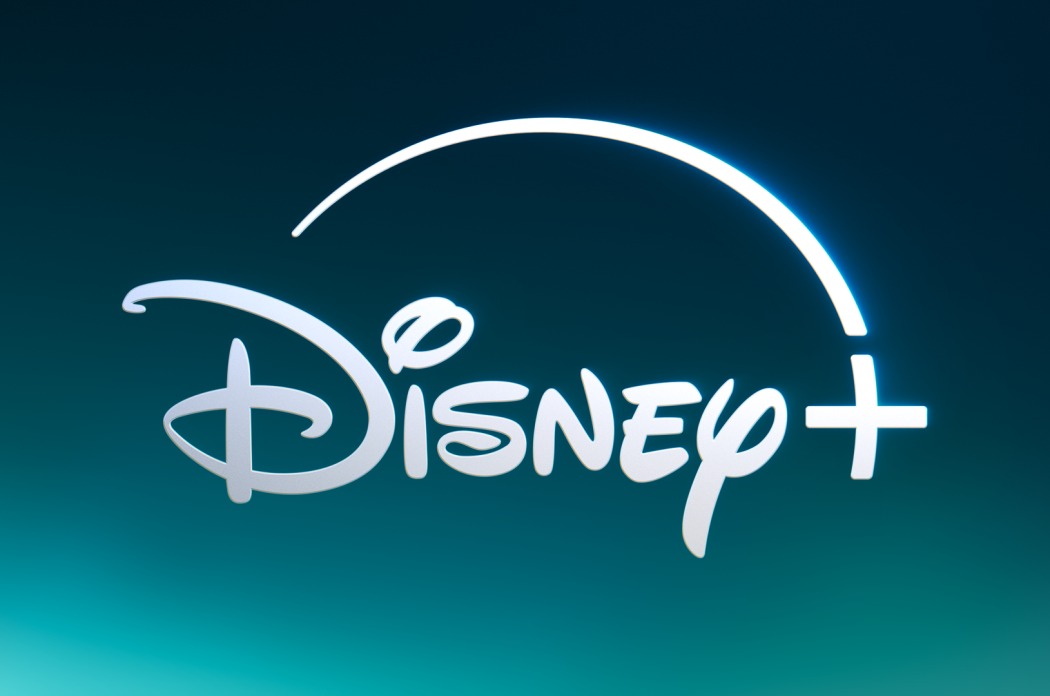
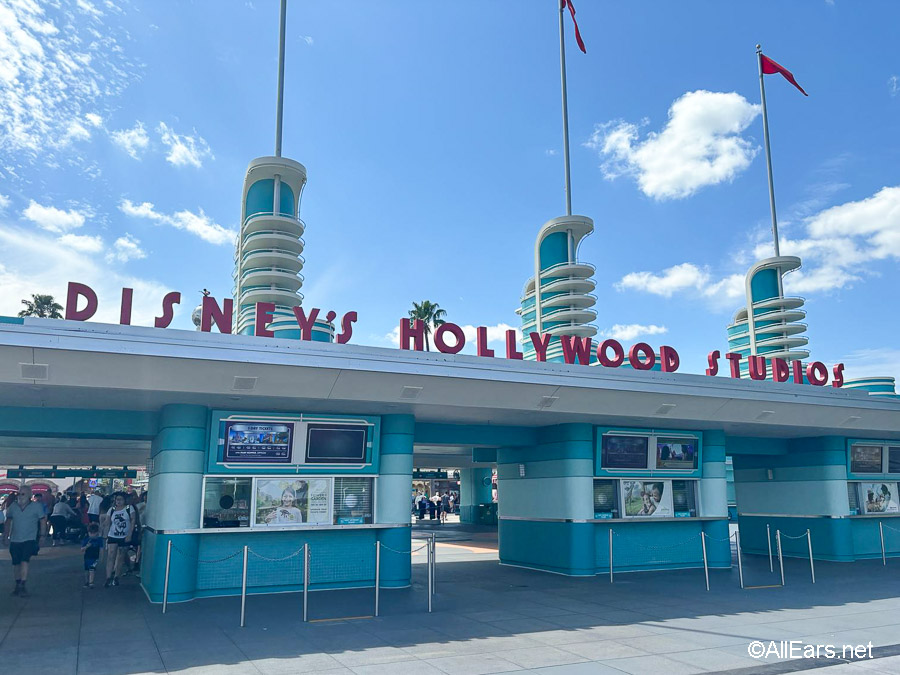


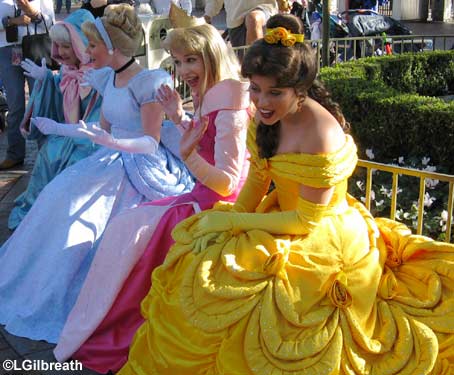
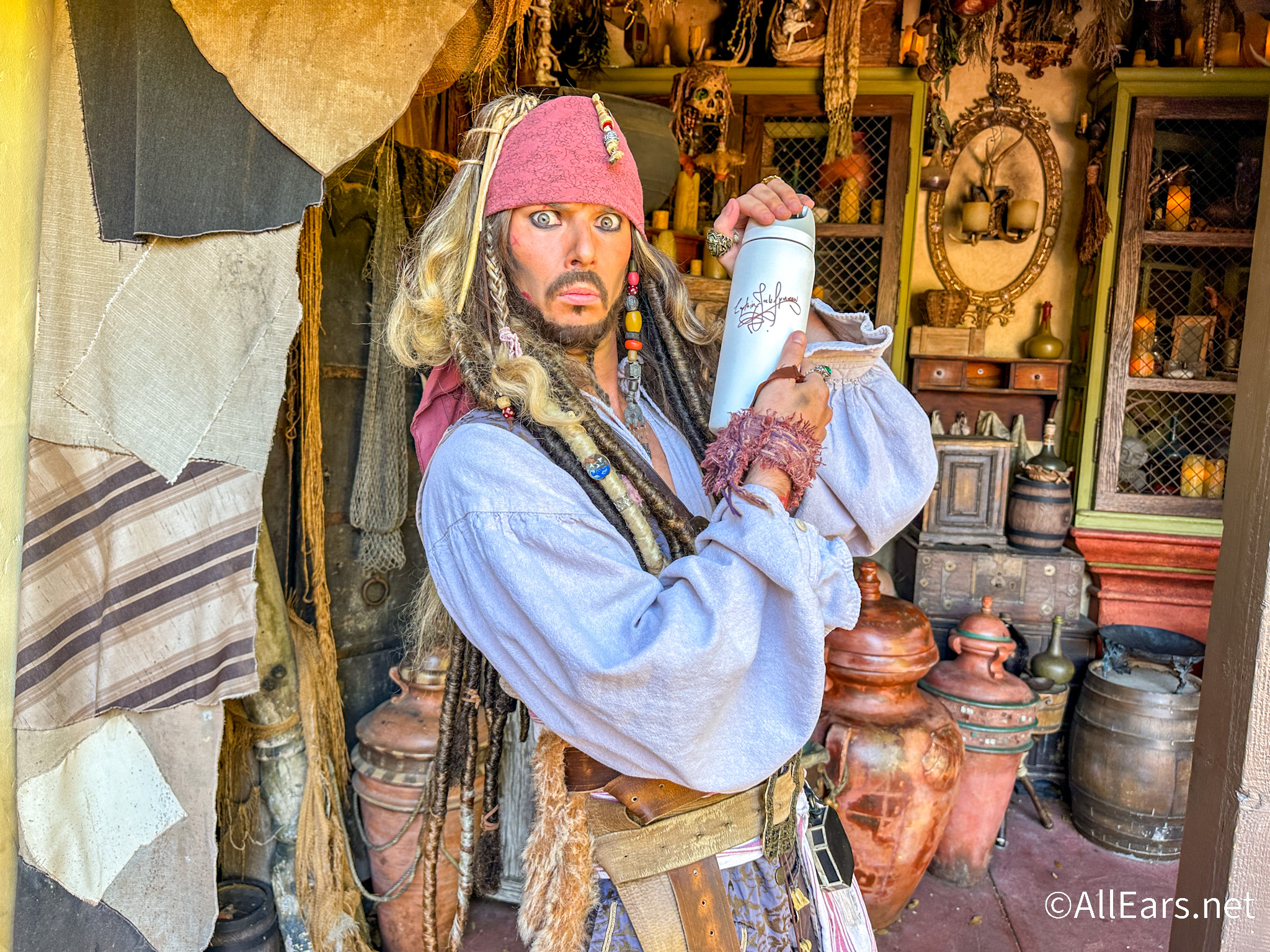

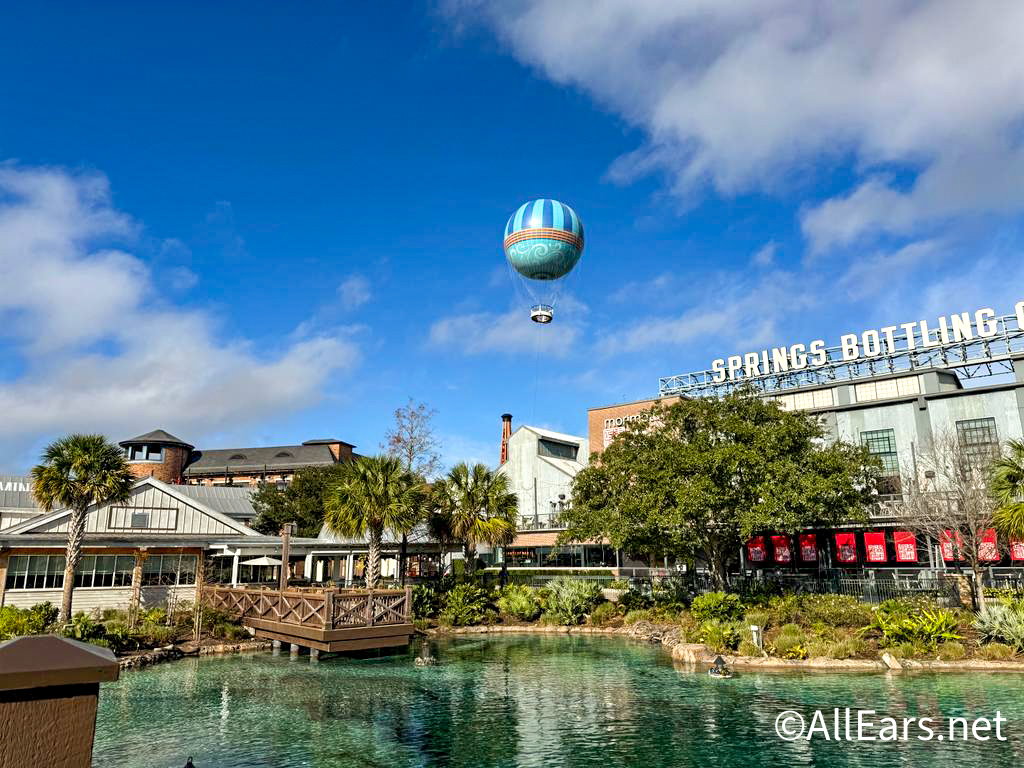
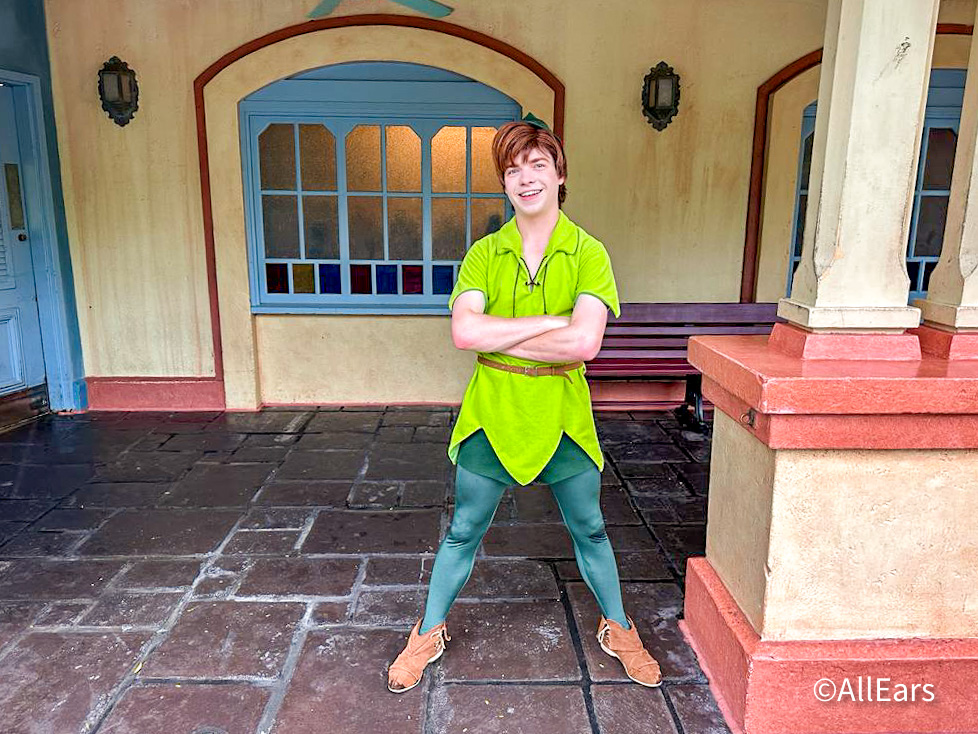
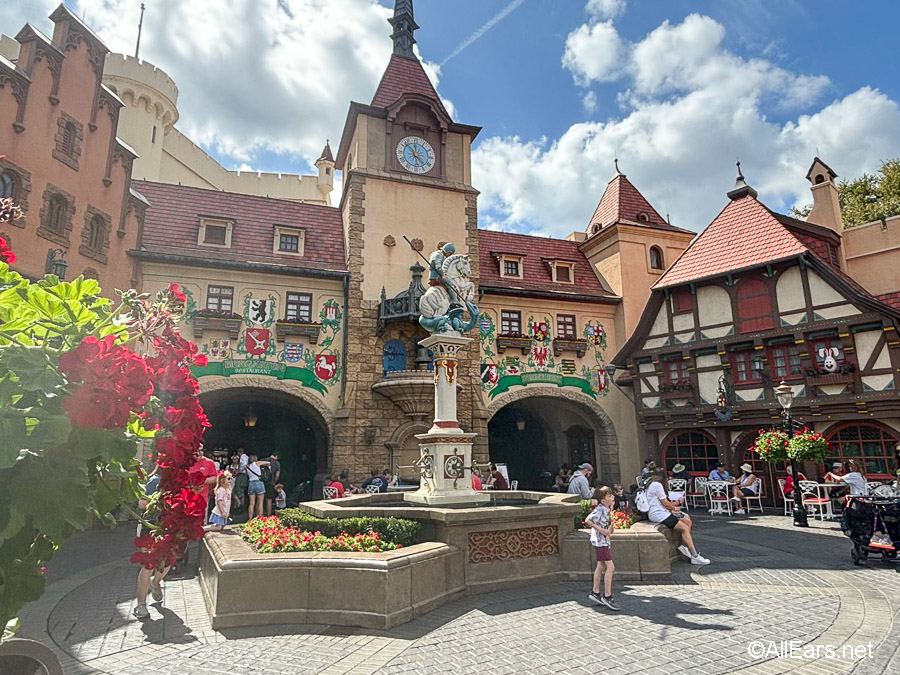
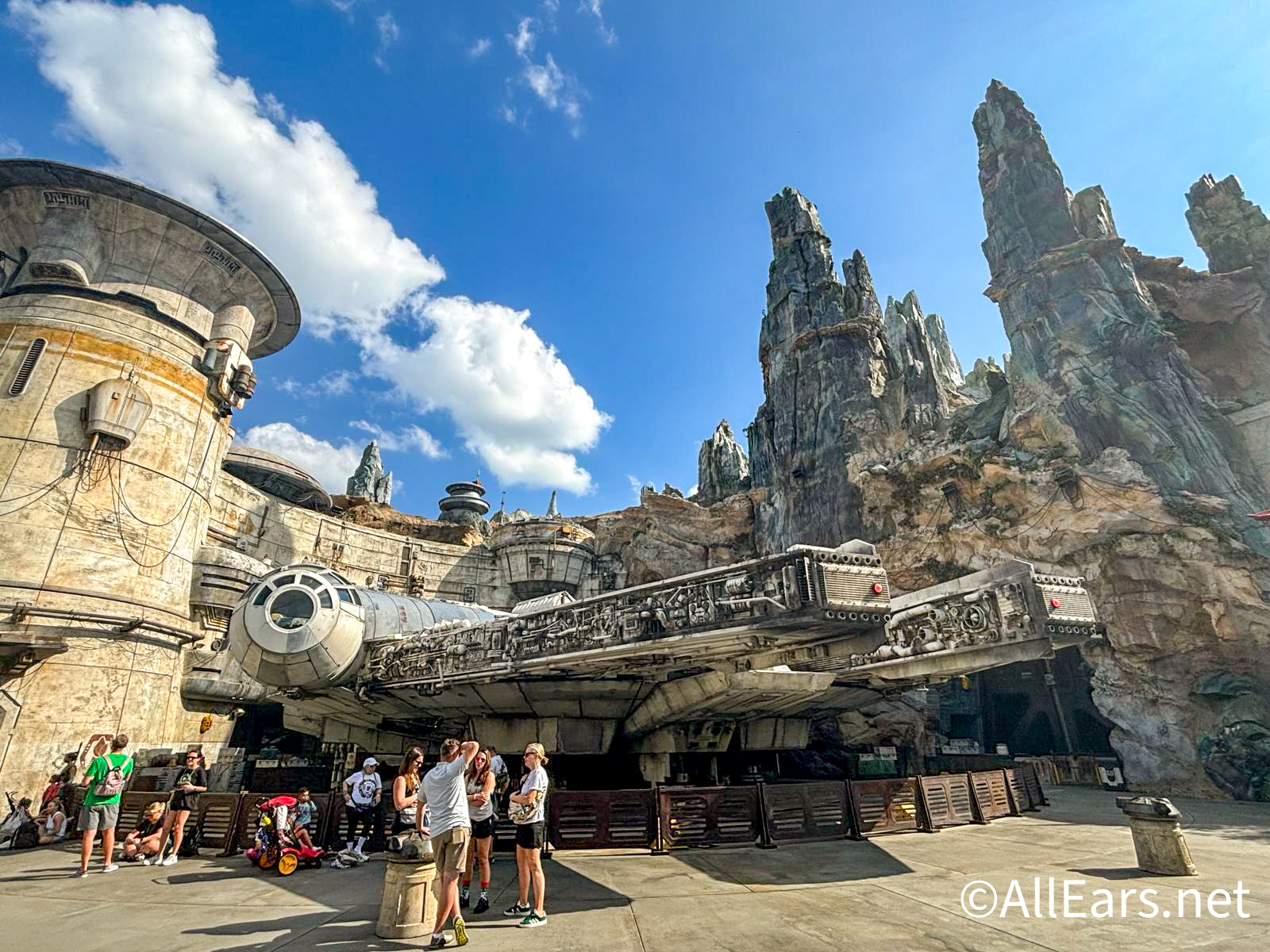

Hi Jack. Did you know that the spitting camels of Aladdin’s Flying Carpets were first used in a parade at the Studios in the mid-90s? Also, I heard that the Adventureland tiki poles were originally located near the entrance of the Jungle Cruise prior to being relocated to their present location. True?
Jack’s Answer:
I cannot verify either of these story. However…
If the camels were used in a parade, I imagine they needed to be “upgraded” before finding a permanent home in the Magic Kingdom to be more weather resistant. This story could easily be true.
I visited Walt Disney World in January, 1972, just three months after the park opened. I have pictures of the tiki poles in exactly the same spot as they are now. So I seriously doubt that they were ever located somewhere else.
Did you know that Thirst Rangers Rocket Ship. Is actually the model ship they used for Disneys Flight of the Navigator movie ? Repainted and reused. 😉
Jack’s Comment:
Where did you hear this? If you look at pictures of the Flight of the Navigator craft, it is shaped completely different than the Thirst Rangers Rocket Ship. However, the Flight of the Navigator craft used to be one of the props seen on the old Backlot tour at the Studio.
Love this series, Jack! The Thunder Mountain photos are my favorite. It’s so hard to notice all the details on this ride. Sometimes I wish that, just once, I could ride through slowly and get to study all of the scenery. Looking forward to reading about all 4 parks…
World Disney is the best theme park & resort in the world!
Lol, DVC Member 2002
Jack’s Comment:
I agree that Disney World is a fantastic resort, but for my money, Tokyo DisneySea is the best theme park in the world. And most people who have been there would agree. It’s head and shoulders above all the rest.
Thanks for the fun and informative blogs!
You missed my FAVORITE water feature of the park! It’s the water wheel and running water system found in the Swiss Family Treehouse. I loved seeing this as a kid, and must wander through the attraction on each trip back to see it again! I was really disappointed at my last visit that it wasn’t running.
Jack’s Comment:
Duh. You are totally correct. I missed a big one. Where was my brain?
I also missed Stitch’s Great Escape over in Tomorrowland. Guests get sprayed inside this theater.
Hi Jack,
Since we are discussing the layout of WDW, there is something I have been wondering. I read somewhere (probably in your blogs!) that when Walt was planning out his acres in Florida, his investors told him he had to create a Magic Kingdom first, before pursuing his dream of EPCOT (the city). So, Walt stuck the Magic Kingdom in the (north-east?) corner of his property, to leave plenty of room for his future city. If things had been different, and Walt had been planning the wonderful vacation-land we know today, where do you think he would have put the Magic Kingdom? In the middle of the property with everything radiating out from it? Do you think there would have been waterways and trams and monorails connecting everything, eliminating the need for cars?
I’m curious about your thoughts on this.
Jack’s Answer:
You’re a little confused on your facts…
Walt knew he had to build the Magic Kingdom first. He knew he needed to do this to generate money to build his City of Epcot at a later date. His accountants wanted him to put the Magic Kingdom near the interchange of Interstate 4 and Highway 192, the only major roadways at the time. They wanted the Magic Kingdom here as this would cut down greatly on the infrastructure that would be required in the initial investment. But Walt would have none of this. Walt purposely placed the Magic Kingdom at the far north end of property. He wanted the park to be the “weenie” that drew guests to drive through his property and through Epcot, once it was built. After Walt died, others tried to talk Roy into moving the Magic Kingdom to a more convenient location, but Roy honored and understood Walt’s directive.
Hi Jack, First of all, I love your blog! You definitely do Disney justice with your attention to detail. Thanks for the great reads! I just read your blog about how water affected the shaping of the Magic Kingdom, which is interesting because only a couple weeks ago my mind was in the same place. You mentioned that Roy was considerate of the local ecosystem when planning the reconstruction of the land, and I think that Disney today for the most part tries to support the natural native wildlife and habitat. But historically the swampy wetland areas, such as the ones Walt Disney World were built on, across the country were viewed as low quality wastelands that were of no value, probably why Walt was able to acquire the land so cheaply in the first place. One estimate is that the US used to have 221 million acres of wetlands; by the 80s, less than half of the original wetland area existed. This decrease is attributed primarily to drainage for agricultural purposes and public works projects. Often, the government encouraged the destruction of wetlands with incentives. It wasn’t until much later that the environmental value of wetlands (flood control, groundwater recharge, water purification, breeding habitat, habitat for endangered species) was realized, and even so it wasn’t until 1987 that legislation began to protect these habitats. Long story short, I began to wonder whether or not Walt would have been able to purchase the land so easily and cheaply had he waited quite a few more decades, and if so, would the company face far less freedom in terms of being able to decide which wetlands to demolish/fill in and which to leave. Currently in Ohio (I’m only familiar with my state’s procedures but I’m guessing it’s similar to Florida), any wetland areas (swamps, marshes, bogs, fens, etc.) on any property must be assessed by the Ohio EPA before any construction or alteration to the property that would affect the wetland. The EPA will categorize the wetland as a 1, 2, or 3, based on the structure, flora and fauna, water, and soil. A 1 is a small wetland area with a small variety of plants/animals that can usually be demolished with permission. A 3 however is an extremely diverse and often large habitat (probably like what was to the south of Magic Kingdom in the now Seven Seas Lagoon) and usually cannot be destroyed. Anyhow, as a huge Disney fan and an environmental masters student, I was intrigued by the idea that a Walt Disney World built post 1987 might look very different. Maybe it would not even have been built in central Florida in the first place! Thanks again for your blogs!
Take care,Stefanie
Jack’s Comment:
Thanks for writing.
And thank you for your informative letter.
Reedy Creek, the governing body of the Walt Disney World property, is under many restrictions now that they were not in the past. For example, if Disney fills in any portion of their lakes, streams, or wetlands, the must create an equal amount of corresponding property someplace else. For example, when the Grand Floridian Villas were constructed, part of Seven Seas Lagoon was filled in for the new property. To compensate, Bay Lake was enlarged to offset this landfill.
Hi Jack –
I’ve been caught in Tomorrowland a few times when the skies opened up. This is the time Tomorrowland gets its water features. Quite a few “See-Ment Ponds” (I know you remember “The Beverly Hillbillies”) appear. They get an inch or two deep and many folks take off their shoes to wade across; not me, love my Crocs, so I plow right thru!
– Jeff
Jack’s Comment:
When it rains in Florida, it often rains hard.
Have you ever noticed after one of these downpours, the cast members are immediately out with brooms, sweeping the puddles of water into nearby drains.
In relation to the Tiki Room, your statement on the Enchanted Fountain is incorrect. It existed in the Tiki Room until 1997, when the remodel for the Under New Management version occurred. In that version, the plumbing was removed in order to have the Goddess of Disaster, Uh-oha.
When the fire occurred that caused the ride to be remodeled, they did not bring back the fountain because it had been removed. Instead, smoke comes out from where it used to be, and the dialogue that referenced it: “we present the enchanted fountain” was edited out.
Jack’s Comment:
Duh. I knew that. I don’t know where my brain was.
Thanks a million for letting me know. I have changed my blog accordingly. I just hate it when I give out misinformation.
Hi Jack! Nicely done. To be honest, I enjoy all the water features in MK, well, except the rain…My husband and I got some great shots By Gaston’s Tavern and the Mine Train this last visit. The new Fantasyland has some beautiful landscaping.
I always find it funny when the spitting camels in Adventureland get the guests who aren’t expecting the water. HEE! HEE!
Have a good week!
My children (ages 2 and 5) remember clearly the camel hitting Dad in the ear unexpectedly. And as the topic is remembered everytime they dream of Disney World, they will probably always remember it.
Hey Jack
Water is defnetly a key element at Disney World, whether it is the at chick-a-pin hill, discovering the Rivers of America, and of course the rain. While some water is welcome more then others, it is an element that is a key factor in some attractions. Can’t wait for your next blog and as always keep up the great work.